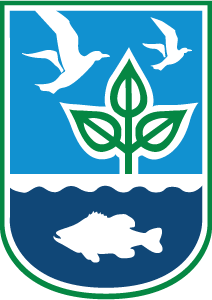Passive Acoustic Monitoring (PAM)
Background
In 2025, the Rhode Island Division of Marine Fisheries (RIDMF) began deploying passive acoustic monitoring (PAM) moorings to improve understanding of the presence and movement of the critically endangered North Atlantic right whale (NARW) in Block Island Sound. With an estimated population of only ~370 individuals, NARWs migrate through Southern New England waters each fall as they head north to feeding grounds, and again in the spring as they travel south to their breeding areas. However, limited data exist on their movements offshore Rhode Island, contributing to significant uncertainty in models assessing the risk of vessel strikes and fishing gear entanglements. PAM moorings allow RIDEM to detect large whale vocalizations, ambient underwater noise, and acoustically tagged marine animals - data essential for informed conservation and management efforts.
Survey Design/Set Up
PAM units are deployed at three locations offshore Rhode Island and swapped every four months for maintenance and data retrieval. Once RIDEM staff analyze the acoustic recordings, NARW detections are submitted to NOAA Fisheries Northeast Fisheries Science Center’s Passive Acoustic Cetacean Map, a publicly available portal for viewing PAM detections over different periods of time and areas.
PAM mooring set ups consist of the following (as shown in photo):

If anyone accidentally entangles a PAM mooring, please contact tara.plee@dem.ri.gov for instructions on returning it to RIDEM.
For more information about this program, please contact Tara Plee (tara.plee@dem.ri.gov).
